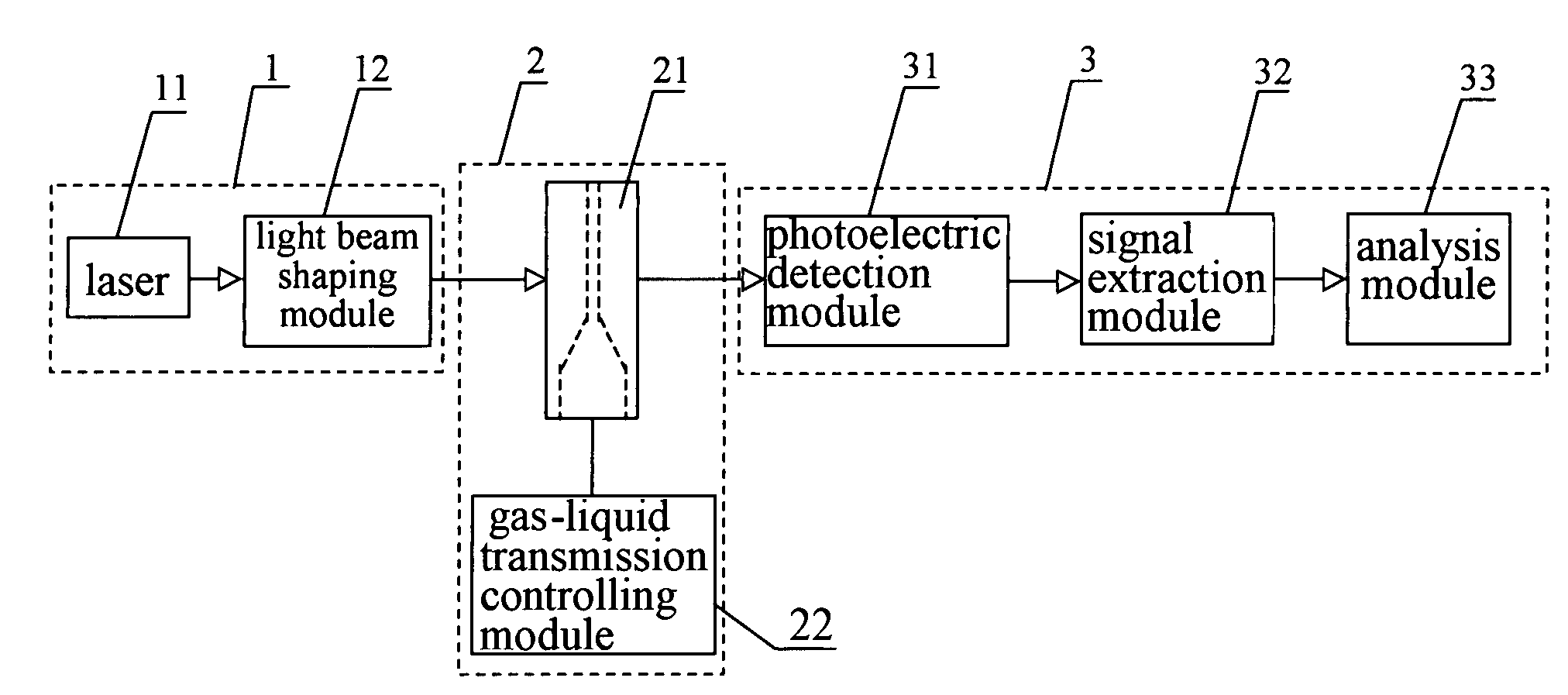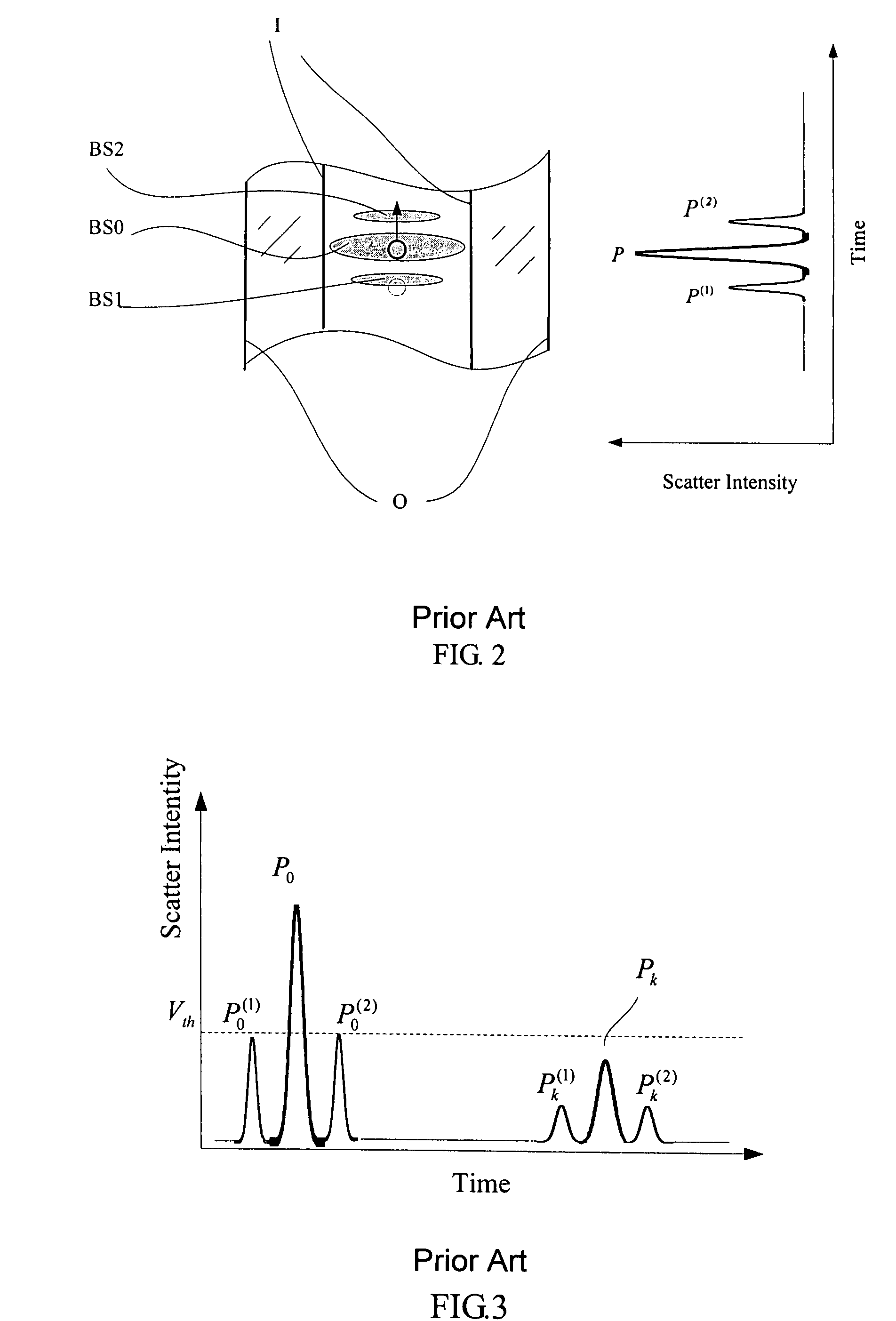Cytometer
a flow cytometer and cytometer technology, applied in the field of flow cytometers, can solve the problems of affecting the overall performance of the system, the complexity of the optical system, the increase of the dimension of the structure, and the error of cell analysis, so as to achieve the effect of reducing the number of side lobes
- Summary
- Abstract
- Description
- Claims
- Application Information
AI Technical Summary
Benefits of technology
Problems solved by technology
Method used
Image
Examples
Embodiment Construction
[0049]The invention is described in greater details below with reference to the accompanying drawings and the illustrative embodiments.
[0050]Referring to FIGS. 4-12, the cytometer according to the present invention comprises an illuminating unit 1, a sample generation unit 2 and a signal processing unit 3 which are connected in series.
[0051]The illuminating unit I comprises a laser 11 and a light beam shaping module 12, as shown in FIG. 4.
[0052]The light beam shaping module 12 is used for collimating and shaping the laser light beam emitted from the laser 11. As shown in FIG. 6, the module 12 comprises a piece of aspheric collimating lens 121 and a pair of mutually crossing cylindrical lens 122 and 123 functional as outputting a light beam with an elliptical cross section which irradiates onto the cells flowing within the flow chamber 21. The length of the minor axis of the ellipse is about 15 μm-25 μm and that of the major axis is about 160 μm-220 μm, and moreover the distribution ...
PUM
| Property | Measurement | Unit |
|---|---|---|
| depth | aaaaa | aaaaa |
| depth | aaaaa | aaaaa |
| depth | aaaaa | aaaaa |
Abstract
Description
Claims
Application Information
 Login to View More
Login to View More - R&D
- Intellectual Property
- Life Sciences
- Materials
- Tech Scout
- Unparalleled Data Quality
- Higher Quality Content
- 60% Fewer Hallucinations
Browse by: Latest US Patents, China's latest patents, Technical Efficacy Thesaurus, Application Domain, Technology Topic, Popular Technical Reports.
© 2025 PatSnap. All rights reserved.Legal|Privacy policy|Modern Slavery Act Transparency Statement|Sitemap|About US| Contact US: help@patsnap.com



